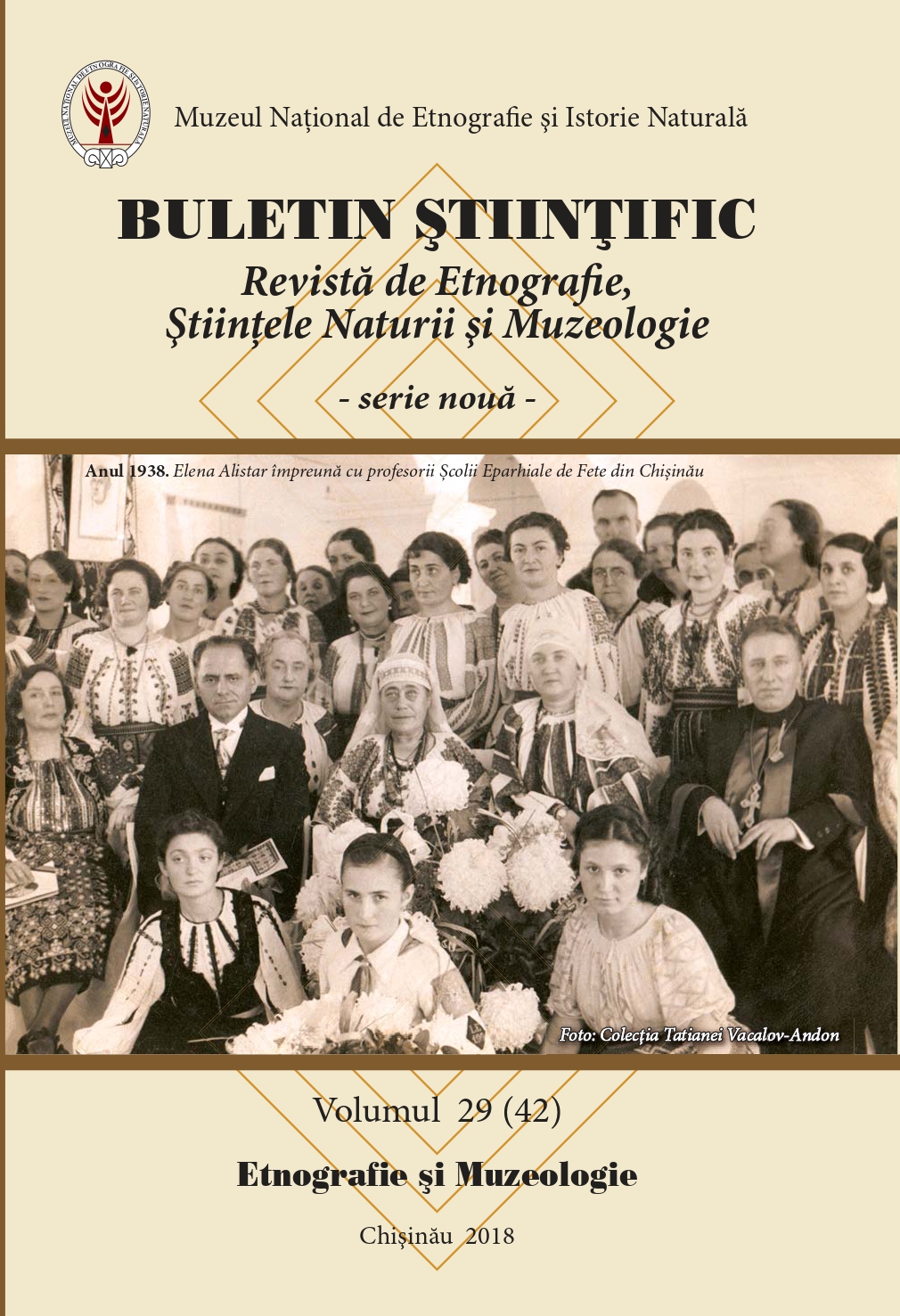Meşteşuguri tradiţionale în patrimoniul Muzeului Etnografic al Moldovei din Iași. Scurtă introducere
Traditional crafts in the collections of the Ethnographic Museum of Moldavia from Iași. A brief introduction
Author(s): Marcel LUTICSubject(s): Cultural history, Museology & Heritage Studies, Ethnohistory
Published by: Muzeul Național de Etnografie și Istorie Naturală
Keywords: handicraft heritage;textile household industry
Summary/Abstract: The present paper analyses the handicraft heritage constituted during the 75 years of existence (made on 28 April 2018) of the Ethnographic Museum of Moldavia. The period between 1968 and 1975 was the most favourable one in the entire history of the museum, in terms of collection development. In those years no fewer than 368 objects related to traditional handicrafts were purchased by or donated to our institution, most of them belonging to the field of household industry. Our research focussed on the following handicrafts: textile household industry, wood manufacture (wheel making, making objects using staves, woodworking excepting house carpentry), ropemaking, blacksmithing, skin manufacture (making of coats, caps and ‘opinci’ – traditional peasant shoes), pottery and stone manufacture. The documentation work based on museum’s main specific sources: the heritage stored within museum spaces, the inventory record, object data sheet and photographic library. Scientific research led to the identification of approx. 860 objects distributed as follows: textile household industry – approx. 370 objects; wood manufacture – approx. 380; ropemaking – 30; blacksmithing – 25; skin manufacture – 21; pottery – 16; stone manufacture – 15, etc. If we relate these figures to the total amount of museum objects, it results that more than 10% of the museum heritage belong to the field of traditional handicrafts. A large discrepancy is to be noted between household industry and wood manufacture on the one hand, and the other five handicrafts on the other hand. It is our opinion that the museum of Iaşi did not have a coherent purchase policy, as the main ethnographic-cultural areas of Moldavia from which handicraft heritage comes include Bukovina (more than half of them) and afterwards Iaşi, Neamţ and Botoşani counties.
Journal: Buletin Științific. Revistă de Etnografie, Științele Naturii și Muzeologie
- Issue Year: 29/2018
- Issue No: 29
- Page Range: 200-209
- Page Count: 10
- Language: Romanian

